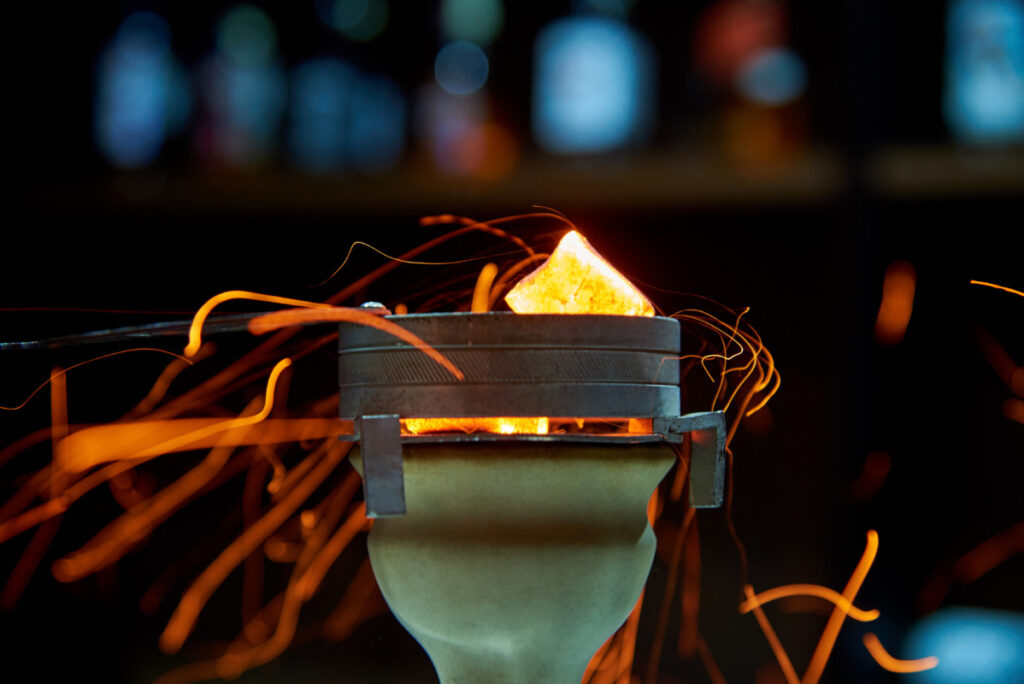Thermocouple Theory
A thermocouple is a junction between two different types of metals that produces a voltage (measured in millivolts) proportional to the temperature sensed at the junction of the two metals. The electrical voltage in millivolts can be measured at the non-junction ends of the metals. Due to the “Seebeck effect,” the millivolts read at the non-junction ends will change according to the temperature sensed at the junction ends. The higher the temperature sensed at the junction, the higher the millivolts that can be measured at the other end. With this principle, we can determine the temperature sensed at the junction just by knowing the millivolts measured at the other end of the metal.
How a Thermocouple Works
The working principle of a thermocouple is quite simple and straightforward. Two different types of conductive metals are joined at one end. One type of conductive metal in the thermocouple will function as a reference with a constant temperature, while the other acts as the metal conductor that detects the heat temperature.

Based on the image from Teknikelekronika.com, if the thermocouple is heated, a potential difference will occur. The potential difference produced is proportional to the heat temperature received by the thermocouple or V1-V2. The thermocouple is then connected to a Thermocontroller as a display for the temperature we can read.
Types of Thermocouples
Thermocouples are one of the most popular types of temperature sensors and are often used in various circuits or electrical and electronic equipment related to temperature.
Some advantages of thermocouples that make them popular include their quick response to temperature changes and their wide operational temperature range, which is between -200˚C to 2000˚C. Besides their quick response and wide temperature range, thermocouples are also resistant to shock/vibration and easy to use.
Thermocouples are available in various temperature ranges and material types. Essentially, the combination of different types of conductive metals will produce different operational temperature ranges. Here are the types of thermocouples commonly used based on Tempsens:
Type E Thermocouple
- Positive Conductor Metal: Nickel-Chromium
- Negative Conductor Metal: Constantan
- Temperature Range: -200˚C – 900˚C
Type J Thermocouple
- Positive Conductor Metal: Iron
- Negative Conductor Metal: Constantan
- Temperature Range: 0˚C – 750˚C
Type K Thermocouple
- Positive Conductor Metal: Nickel-Chromium
- Negative Conductor Metal: Nickel-Aluminum
- Temperature Range: -200˚C – 1250˚C
Type N Thermocouple
- Positive Conductor Metal: Nicrosil
- Negative Conductor Metal: Nisil
- Temperature Range: 0˚C – 1300˚C
Type T Thermocouple
- Positive Conductor Metal: Copper
- Negative Conductor Metal: Constantan
- Temperature Range: -200˚C – 350˚C
Type S Thermocouple
- Positive Conductor Metal: 90% Platinum + 10% Rhodium
- Negative Conductor Metal: Platinum
- Temperature Range: 0˚C – 1450˚C
Type R Thermocouple
- Positive Conductor Metal: 87% Platinum + 13% Rhodium
- Negative Conductor Metal: Platinum
- Temperature Range: 0˚C – 1450˚C
Type B Thermocouple
- Positive Conductor Metal: 70% Platinum + 30% Rhodium
- Negative Conductor Metal: 94% Platinum + 6% Rhodium
- Temperature Range: 800˚C – 1700˚C
Type C Thermocouple
- Positive Conductor Metal: 95% Tungsten + 5% Rhenium
- Negative Conductor Metal: 74% Tungsten + 26% Rhenium
- Temperature Range: 0˚C – 2320˚C
Type J and K thermocouples are typically used by industries due to their relatively low cost. They are used to control the temperature of heaters, ovens, and furnaces to ensure they are controlled and remain constant.
Consult your needs immediately for free via WhatsApp with our team at (+62)852-1066-5767. Make sure you get the right heating element solution for your industrial application needs. Don’t forget to visit our website at smartheat.co.id and Smart Heat social media at @Smartheat.


